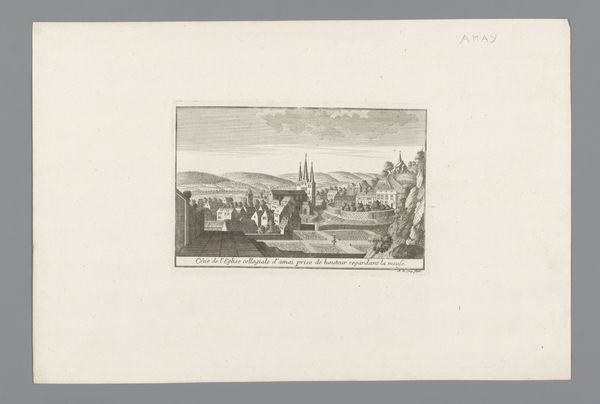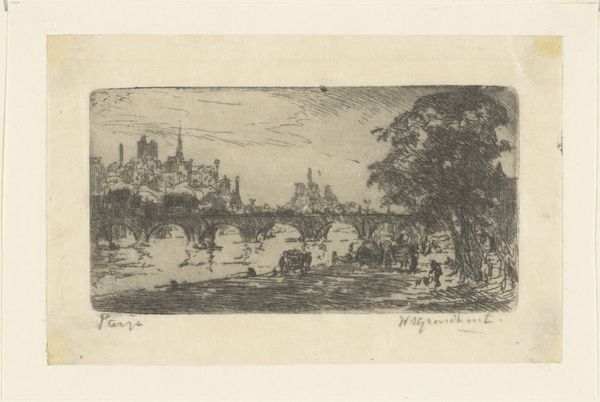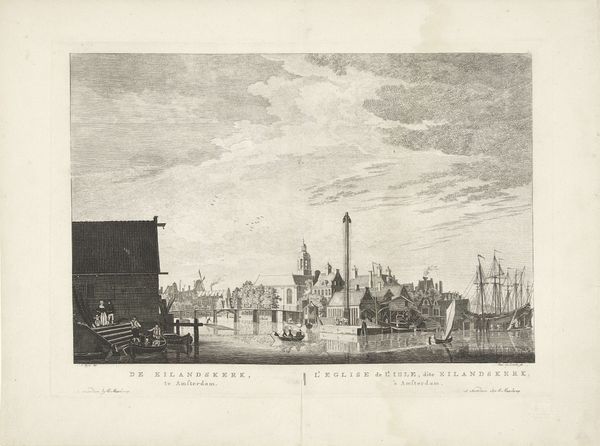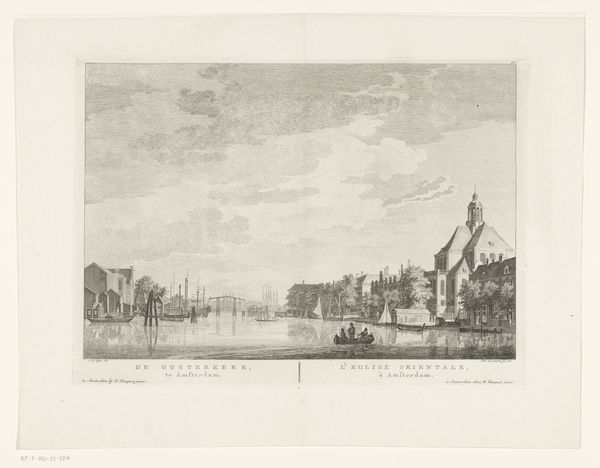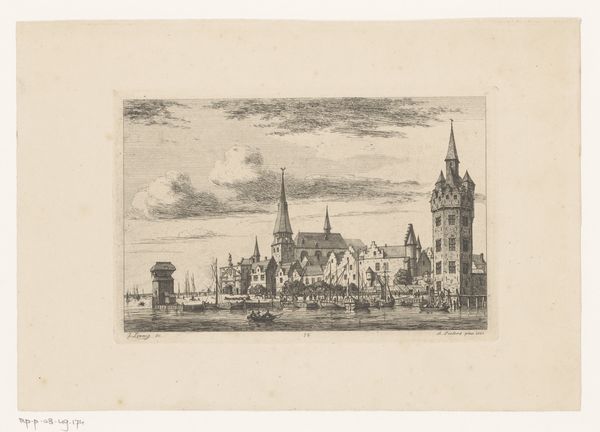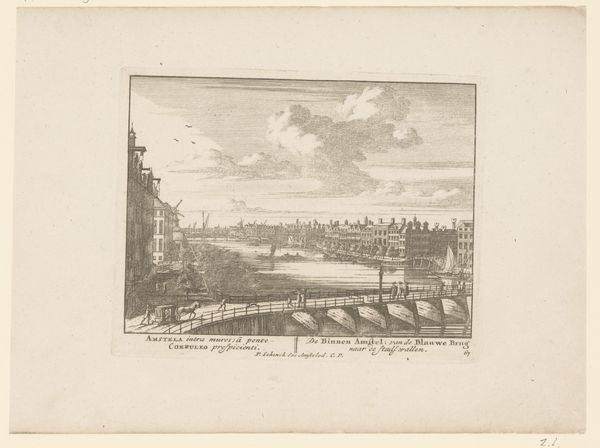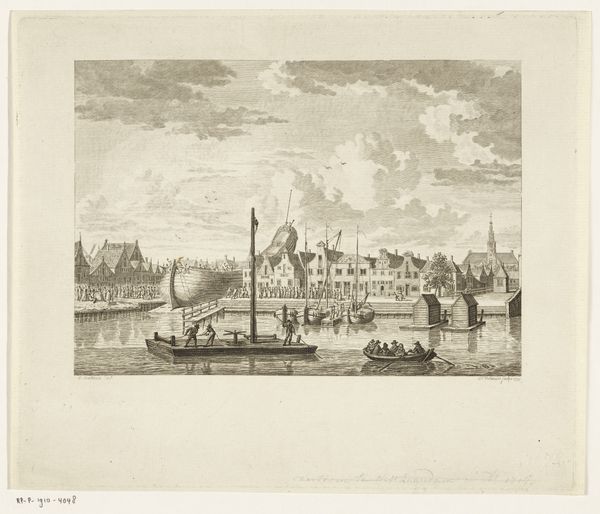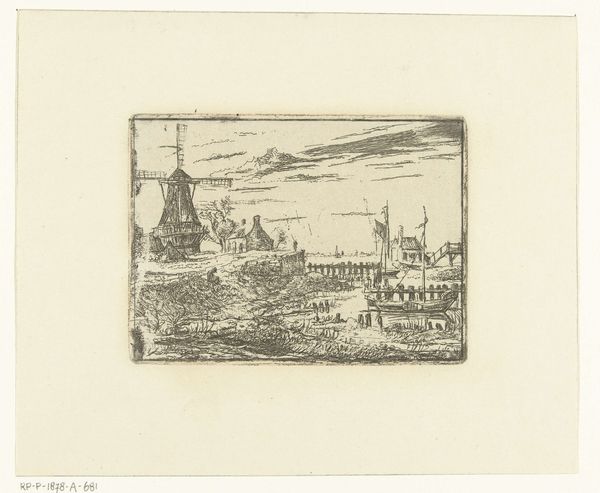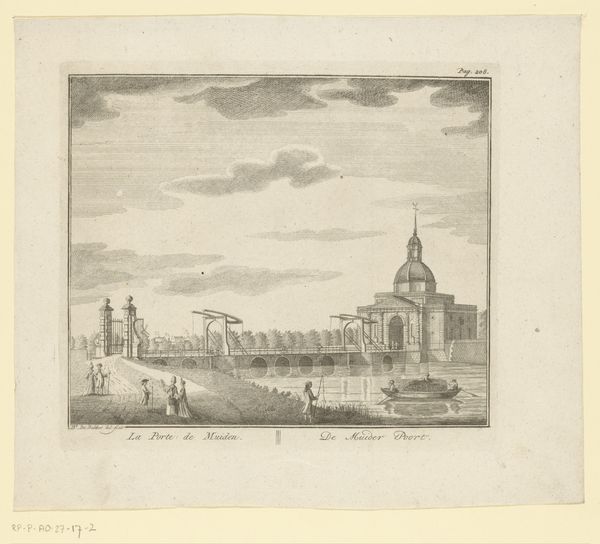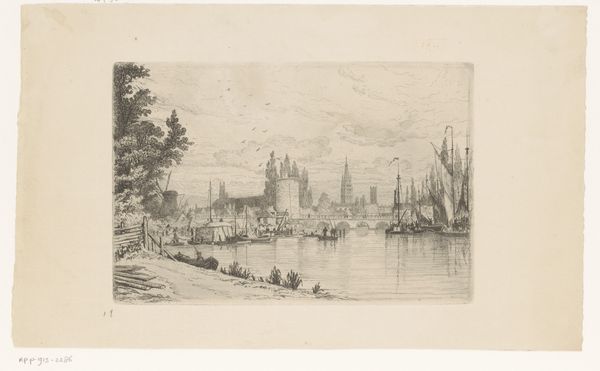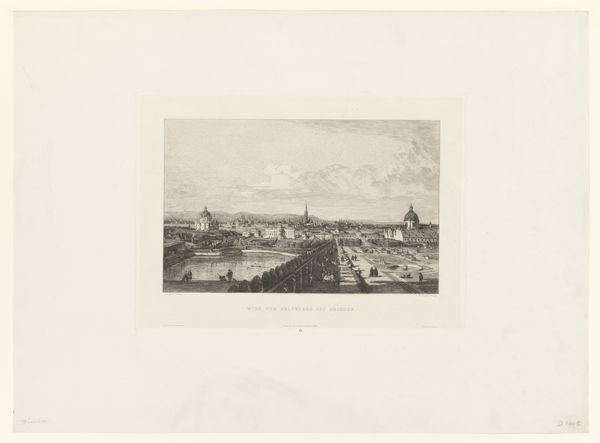
drawing, paper, engraving
#
drawing
#
baroque
#
landscape
#
river
#
figuration
#
paper
#
line
#
cityscape
#
engraving
Dimensions: height 98 mm, width 181 mm
Copyright: Rijks Museum: Open Domain
Curator: Let’s turn our attention to "Bridge over River to Walled City," an engraving on paper by Adam Perelle, created sometime between 1650 and 1695. What are your initial thoughts? Editor: The first thing that strikes me is how incredibly detailed this rendering of a city is, given the materials—such fine lines. It almost has the effect of woven fabric. Curator: Yes, Perelle’s use of line really brings forth certain notions of status and accessibility of landscape in relation to social power. He seems fascinated by architecture—and perhaps, more specifically, displays of civic might. Look how the city’s fortifications dominate the skyline! The bridge crossing toward them looks quite deliberate. I want to question whom those bridges were built for. Editor: Absolutely. And look at the process. The engraving had to be planned and then transferred meticulously to the plate, and finally printed—quite an industrial task to disseminate power like that. And, on top of that, its portability—paper allows for that city view to travel. Consider who the likely consumers were! Curator: I agree, these landscape depictions functioned almost as propaganda for the elite, reminding those who consumed them of their dominion. These images reinforce a certain order, showcasing idealized control. But tell me, does the actual rendering offer more than pure boosterism? Editor: I’m intrigued by the presence of human figures alongside the rigid city structure—those details that demonstrate scale and the sheer labor involved in construction and in the activities of a city. Do you see the subtle differences in tone to distinguish land, structure, water, sky? I imagine the original craftsman had an awareness of the natural materials, where stone and earth meet river and air, informing the overall composition. Curator: It's a composition that speaks to Baroque sensibilities. The somewhat stylized approach lends itself to thinking about idealization and its inherent tensions. These urban landscapes were consumed within a broader context of political negotiation and cultural exchange, reflective of how cities defined themselves, sometimes against others. Editor: I think that analysis really nails why I keep coming back to it. The piece as artifact represents human intentionality but within reach of resources. Curator: A perfect point to ponder. It offers an opportunity to engage with larger ideas regarding human labor and material culture in 17th-century Europe. Editor: And to remind ourselves that art offers a look into our social narratives that, once questioned, offer even more resonance.
Comments
No comments
Be the first to comment and join the conversation on the ultimate creative platform.
